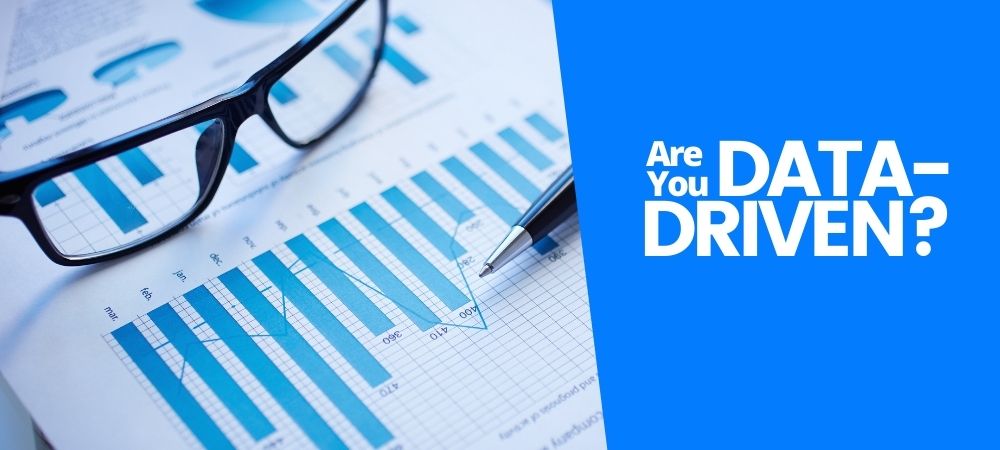It’s a data-driven world.
Nearly every decision—from determining which clothes to wear to deciding what car to buy—involves reviewing and analyzing copious amounts of data and information.
The same holds true for how decisions are made in insurance agencies. Gathering and analyzing key data to guide decisions is essential for achieving sustained, strategic growth.
Making data-based decisions for strategic growth makes a lot of sense, but the process, especially in the insurance sector, has proven to be an immense challenge. For starters, insurance companies are continuously collecting massive amounts of data. Clearly, just having access to this data isn’t enough to fuel strategic growth for an agency
It’s what you do with this data that makes a difference.
The real challenge for long-term growth is determining what specific data to analyze, and more importantly, deciding how it’s used to guide future decisions for the agency.
So, the question is, what should data-based decision-making for strategic growth look like for your insurance agency?
Data-driven decisions often depend on the size of the agency (but they don’t have to be)
According to entrepreneur and insurance expert, Tony Caldwell, the role of data-driven decisions often differs based on the size of the insurance agency. For example, large agencies typically only make decisions that can be supported by data, giving little attention to emotion or gut feelings.
On the other hand, it’s common for small and/or independent insurance agencies to use data as a way to minimize risk and to validate decisions that are often described as gut feelings.
Caldwell also points out that, when it comes to strategic growth, data can be used in one of two ways: as a spotlight or as a road map.
Smaller agencies tend to use data as a spotlight for future opportunities. Data often provides important insight into opportunities, allowing the agency to shift focus and pivot their attention to them.
Larger agencies more often use data as a road map to plot long-term growth. As they become larger and more complex, there tends to be a shift to using relevant data as a way to compare results and a tool to guide the planning for long-term growth.
While both the “spotlight” and “road map” approach have their benefits, it’s worth noting they need not be mutually exclusive. A hybrid approach can help agencies of any size prepare for strategic, long-term growth.
The benefits of a data-driven strategic growth plan
Regardless of the size of your agency, there’s much to gain and little to lose by shifting to a data-driven strategic growth plan. Benefits of using a data-based decision-making approach include:
- Gaining a better understanding of the needs, goals, and concerns of your customers
- Remaining competitive with, or better yet, a step ahead, of your competitors
- Becoming better prepared to respond to, and shift toward, future changes in the insurance market
- Identifying key opportunities for improvement, growth, and profitability
5 steps to becoming a data-driven insurance agency
1. Commit to being a data-driven agency
Using data to guide key organizational decisions doesn’t happen overnight. Like any successful strategic growth model, strategic data-driven decision-making requires planning, development, and most importantly, agency commitment and employee buy-in.
In order to start the transition to using key data as a guide, it must become part of your organizational goals, embedded in your agency’s mission statement, and the foundation of your strategic growth plan.
In other words, committing to using data as a guide means committing to building your agency’s “road map” towards strategic growth.
2. Complete a data audit
As mentioned earlier, data drives the insurance industry. However, like anything, you don’t know what you have, unless you know what you have.
Conducting a thorough data audit is the first step to knowing what you have. Only after you realize all the data you currently have access to can you determine which data sets are most important in driving your agency’s strategic growth.
Look at your data audit like your “spotlight.” Try to identify any possible opportunity to guide your agency forward.
3. Identify your key performance indicators (KPIs)
Once all available data has been identified, determine your key performance indicators (KPIs). These KPIs—typically a combination of financial performance data, production, agent performance, customer retention data, and future growth opportunities—will serve as the targets for members of the agency to aim for, measure against, and refer to when making key decisions.
Consider these KPIs guard rails to keep your agency focused on achieving strategic growth.
4. Turn KPIs into action
Data is only as useful as what you do with it. When it comes to data, how your agency decides to analyze, present, and apply the information you’ve collected will determine your success. It’s essential to make sure the data, or KPIs, you are using are “actionable.” An actionable KPI provides information in order to drive actions to produce results.
If the data you are collecting isn’t actionable, or if you can’t add context around it to make it meaningful, it’s useless.
5. Educate, evaluate, adapt, repeat
You’ll need an effective feedback loop to complete your shift.
This process involves more than procedures; it’s also a shift in organizational culture.
Take time to:
- Educate everyone about the value of data
- Build-in frequent opportunities to evaluate results
- Adapt your goals and procedures based on the feedback
Whether you are part of a large company or a small up-and-coming insurance agency, making organizational decisions based on data gathered from specific indicators is the most effective way to strategically drive your agency toward sustainable long-term growth.








![[Insurance Roundtable Episode 1] Insurance 2.0: Defining a New Insurance Experience in the Digital Age 1 Insurance 2.0: Defining a New Insurance Experience in the Digital Age](https://www.leadsquared.com/wp-content/uploads/2022/03/Ins-RT-ep1-80x80.png)
